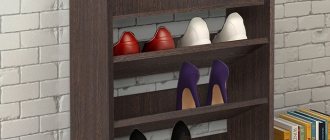Home / Tubers
Back
Published: 07/01/2020
Reading time: 5 min
0
1
- 1 Design features
- 2 Exterior view of the greenhouse
- 3 Classification of greenhouses
- 4 Preparatory work
- 5 Selecting material for the greenhouse frame
- 6 Plumbing, electricity, greenhouse heating
- 7 Let's talk about metal in more detail 7.1 About the foundation
Homemade greenhouses
A hot summer is ahead of us, which we already miss. And we must carry it out with maximum efficiency and benefit for ourselves and our children. In order to be less at the mercy of nature’s tricks and to grow beautiful flowers in our garden plot or to get a wonderful harvest of vegetables, we simply cannot do without a greenhouse.
I think that many of you can make a homemade greenhouse with the help of a chisel, a hammer and some mother (just kidding). Particularly golden hands are not needed here.
A greenhouse with dimensions of 6.0 by 2.5 m, made in the form of a metal glazed (or film) frame and built on a plinth made of concrete blocks - this is what we need to get a good harvest for the winter.
The base is an important part of the greenhouse
The base of the plinth will be the MZFL shallow-depth strip concrete foundation (since the greenhouse is light). a columnar foundation would be quite suitable , but as usual.
It should be cast directly into the trench (with formwork installed above it), correctly laid in it and tied with reinforcement wire.
The ratio of cement and sand in the solution is 3 to 1 or 4 to 1 by volume. The formwork above the ground does not have to be made high - 20-30 cm is quite enough, and the rest of the base can be made from a block (but again ask yourself the question - do you need a high base?).
Pouring the greenhouse foundation into formwork and trench (directly into the ground)
After the mortar has completely hardened, we lay out the first row of blocks (piping) along the perimeter of the foundation. Starting the next row, in one of any walls of the greenhouse, leave an opening for the door . During laying, it is necessary to constantly check the correctness and verticality of the corners .
To securely fasten the corners of the trim into the base, we embed pins or plates. We level the surface of the base with a layer of mortar, creating a slope to the outside to drain the water.
Some people place greenhouses directly on the ground, without any foundation - this may be relevant for lightweight arc structures covered with film. But personally, I am a supporter of permanent structures, and not “cardboard houses” ready to collapse at the first strong gusts of wind. In addition, the option under consideration can be adapted for winter. To make the greenhouse winter-proof, you need to install thicker double-glazed windows/polycarbonate, and of course add heating, you can even use a biogas installation. The soil must warm up in winter, because our winters are harsh.
Greenhouse metal frame
the greenhouse frame from metal bars and corners. It consists of wall frames, which must be reinforced with intermediate struts and racks. The gable roof is based on rafters and a ridge corner. The rigidity of a greenhouse on a metal frame is provided by ceiling braces and wind braces.
A practical solution for manufacturing a metal frame for a greenhouse with the installation of cellular polycarbonate on the roof and reinforced polyethylene on the walls.
In conditions of short and often cold summers, a greenhouse is an integral attribute in the garden.
Nowadays, the new, and for some, the old and proven coating, cellular polycarbonate, is becoming more and more popular and accessible for many.
The trade is replete with a large number of frame options for cellular polycarbonate; many designs have rightfully sought popular approval, and some only depleted the family budget, without serving even one year, they broke down, unable to withstand the snow load.
Many gardeners prefer to make greenhouses with their own hands, using more reliable and proven materials.
Sergei Viktorovich Pakhomov from the Leningrad region sent us his version of the greenhouse, this is what he writes.
For a long time I had my eye on cellular polycarbonate as an indispensable item in the construction of a greenhouse. The only thing that scared me was the high cost of the material and the lack of information on its operation.
Now it seems that prices for cellular polycarbonate have become more moderate and reviews have appeared on how it serves and behaves in different weather conditions.
Still, covering the entire greenhouse with cellular polycarbonate seemed too expensive, so the decision was made to cover the roof and gables with 6 mm. polycarbonate, and the walls are reinforced polyethylene.
Recently, the winters have been quite snowy, which showed the inadequacy of greenhouses made from thin metal profiles, so I decided to make a solid greenhouse and chose a 40*40mm steel corner and a 40*20mm profiled pipe as the material for the frame.
Preparatory work
In order to make the simplest greenhouse by hand, it is necessary to carry out the necessary preparatory measures.
When choosing a location for a greenhouse, you should be guided by the fact that there is no interference with direct sunlight. The site should be as level as possible, and it is advisable to have protection from strong winds.
Please note that you will need water for irrigation and electricity for lighting. Therefore, the greenhouse should be located on the site within acceptable proximity to these sources.
We suggest you read How to make a brownie with your own hands
Greenhouse frame
As mentioned earlier, the frame is made of a metal corner 40*40 and a steel profile pipe 40*20mm, the connection of the frame elements is made using electric welding.
The length and width of the greenhouse can be made to any size, it is advisable to make it to match the width of the polycarbonate, its width is 2.10 m. The lower and upper frame of the greenhouse frame is made of a corner, and the posts are made of a profile pipe. The roof of the greenhouse is made in the shape of a house; the steeper the slope, the less snow will be retained on the roof.
According to the recommendations of polycarbonate manufacturers, the gaps between the sheathing of cellular polycarbonate with a thickness of 6 mm for the construction of flat, pitched structures (“houses”) should be 750x750 mm (maximum 850x850 mm); in our case, the frequency of the sheathing is made with a small safety margin of 500x500 mm.
The recommended profile width for fastening sheets is set by polycarbonate manufacturers to be at least 30 mm; it is also advisable to paint the profile itself in light colors to ensure reflection of sunlight. For those who don’t want to paint the frame in light colors, aluminum tape can be glued to the metal.
Tools and materials for work
To begin the construction process, you need to prepare the following set of materials and tools:
- Grinder and welding for working with the frame.
- Cement, sand, gravel for laying the foundation.
- Wooden boxes of sufficient depth and width to organize unpaved areas.
- Wooden or metal parts for mounting shelves.
- Polycarbonate or other materials for covering the prepared frame.
- Fasteners (screws, self-tapping screws, nails, thermal washers).
- Rotating fittings for mounting doors, vents and ventilation hatches.
- DIY greenhouse drawings.
You will also need barrels for settling water, hose systems for organizing drip irrigation, and trellises for stretching climbing crops. For heated buildings, you can choose a traditional wood-burning firebox, an electric stove or an air “gun”.
Greenhouse walls
It is best to attach reinforced polyethylene to the metal frame of the greenhouse using self-tapping screws (bug) and plastic tape for greenhouses (it is now actively appearing on sale); holes for the screws are pre-drilled in the metal frame of the greenhouse. Another advantage of a pitched roof is the ability to install a drainage system around the perimeter of the roof. By installing a barrel nearby to collect water and draining the roof into the barrel, on rainy days the issue of watering the plants in the greenhouse is resolved.
I hope this design will be convenient and reliable in operation, and in winter I think the greenhouse will not cause problems and will withstand all snow loads, time will tell.
Use pipes, film, polycarbonate and even old window frames to enjoy fresh vegetables all year round.
Plumbing, electricity, greenhouse heating
After the greenhouse frame, covering, and ventilation are completed, you can begin installing the electrical network, heating and water supply.
Stove heating, electric energy, or gas can be considered as a heat source for the room. The issue of efficiency will depend on the regional location of the facility.
For productive work, it is advisable to bring water into the greenhouse. For this, a plastic pipe with a diameter of 1.5 inches is usually used. The riser is located at the entrance to the room.
What you need to know about greenhouses
Purpose
Like a greenhouse, a greenhouse is used to create a favorable microclimate when preparing seedlings or when fully growing tomatoes, cucumbers, cabbage and other plants.
In a broad sense, both structures are perceived as the same thing, although in fact a greenhouse is a small and unheated structure. A greenhouse is a larger building with a heating and ventilation system, which allows for the cultivation of many crops at any time of the year.
Design
The structure of greenhouses is quite simple. A frame is assembled from pipes, metal or wood, which is covered with film, polycarbonate, glass, acrylic and other light-penetrating materials. If the weight of the structure is very large, it is additionally installed on the foundation.
For ventilation, removable panels or opening transoms are provided. Heating is carried out using water heating with radiators, infrared heaters or hot air from heat sources outside the greenhouse.
Installation
Since sunlight is vital for plants, the greenhouse should be built on the south side. It is advisable to place it on a slope and closer to other buildings in order to protect it from the wind and have access to utilities. It is better to stay away from high fences and trees: they provide shade, and falling leaves reduce light transmission.
How to organize a place for a greenhouse?
Layout of the greenhouse location on the site.
Finding a suitable location to build a greenhouse includes factors such as:
- illumination: whether the greenhouse will be used in winter or summer, light intensity, presence and movement of shadow. If you make a mistake, you will need to install additional lighting, which is expensive;
- direction of air flow: the greenhouse should be protected from gusty cold winds in order to reduce heat consumption. One of the best methods of protection would be to plant a hedge at a distance of 15-20 m from the greenhouse;
- convenient approaches to the greenhouse create optimal conditions for planting, watering and harvesting. Here it is worth highlighting greenhouses built near the house or adjacent to the entrance to the house. In addition to convenience, the ability to connect general heating between the house and the greenhouse will also be important;
- a flat horizontal soil surface at the construction site is very important, as it facilitates the construction of the greenhouse and does not create preconditions for the soil to dry out in one place of the greenhouse and excess moisture to accumulate in another;
- the appearance of the greenhouse is the aesthetic side of the issue, and you should not neglect this, because it is more pleasant to do those things that are pleasing to the eye.
How to make a greenhouse with your own hands from agrofibre and reinforcement
The simplest design option, which is ideal for a small greenhouse. A frame made of reinforcement is installed directly on the bed, and agrofibre or, as it is also called, spunbond, is stretched over it. This material protects from the sun while retaining heat and moisture.
1. The dimensions of such a greenhouse are chosen arbitrarily, depending on the footage of available materials. For example, it is convenient to cut six-meter reinforcement in half. With such a length of arcs, the width of the greenhouse is about 80 cm. The arcs themselves should be installed in increments of 1.2–1.5 m.
teplica-exp.ru
2. Arcs are bent from reinforcement with a diameter of 8 mm. Next, drip irrigation tubes or an old hose are put on them, leaving 10–20 cm at each end so that it is convenient to insert the structure into the ground.
ebayimg.com
3. After marking the installation locations for the arcs, scraps of steel pipes or drilled wooden pegs 20–30 cm long are driven into the ground, and the reinforcement is inserted into them.
stopdacha.ru
4. Spunbond can be stitched on a sewing machine, forming pocket folds that fit directly onto the arches. Another option is to install plastic pipe guides on the sides of the beds and attach agrofibre to them using purchased clips or cut pieces of pipes. The covering material can eventually be easily lifted by simply removing them.
stblizko.ru
5. If desired, you can attach the arcs not to pipes driven into the ground, but to metal guides rigidly fixed at the edges of the base. This design will allow you to fold the greenhouse like an accordion, simply by moving the arcs.
must.kz
6. The free ends of the spunbond at the ends must be collected, tied in a knot and secured with a peg, earth or other means.
samara.kinplast.ru
Here are step-by-step video instructions.
Key points to consider
- the minimum size of the greenhouse is slightly higher than the height of an adult (about 2 m at the ridge);
- the higher the structure, the more favorable the climate in it. A large greenhouse slows down the heating of the air during the day and cooling in the evening. At the same time, the temperature regime is regulated more smoothly, which has a beneficial effect on the development of plants. The standard length of the room is from 2 to 6 meters. The width of the greenhouse is usually equal to the number of beds and the distances between them. If you equip greenhouse rows with a width of 1 m and a passage of 0.45 centimeters, the distance from wall to wall will vary within plus or minus two and a half centimeters;
- The size of the greenhouse door can be 1.7 x 0.7 (height and width respectively)
How to make a greenhouse with your own hands from masonry mesh and film
A budget option for a greenhouse made from masonry mesh and regular film, which is quickly assembled and has a number of advantages. The design does not require a foundation; due to its elasticity, it is resistant to wind loads, and is also convenient for tying up plants from the inside. At the same time, by folding the mesh, you can get different sizes depending on your needs.
- Wooden beams, steel angles, pipes or channels are used as load-bearing posts. They are hammered at a distance of 1.2–1.4 m.
- The greenhouse arch is formed from two pieces of mesh laid overlapping. From below it is attached with wire to the posts, and from above it is fastened together with the same wire or plastic ties.
- To strengthen the structure, T-shaped supports made of wooden beams 50 × 50 mm are installed in the middle of the passage. If desired, they can also be driven into the ground.
- A film is put on a dome assembled from a mesh, which is held in place by strings of twine or rope stretched over it.
- The side walls are also made of film, which is folded up and attached to the dome with tape. In several places at the top and bottom, small windows are cut for ventilation of the greenhouse.
- The door is made on a wooden frame or made from the same film, which is cut and attached to the side wall with magnets in the manner of door mosquito nets.
see also
Comments 28
In the photos there was a latch on the door, but I hung the window one on the other side, on the side wall - closed the door, pushed the latch. And no loops for you. I connected 2 six-meter sheets into an arc with a central connecting tape for 2 days, that’s something. I put it in here, a sheet came out there... damn it.
What’s not to like about the finished latch?
He's no thicker than a tin can
Here in Minsk they are quite thick - I installed them in my greenhouse.
This way you can close someone there! It must be done so that it can be opened both from the outside and from the inside.
Emergency exit through the window
Oh, believe me, you’ll hear a lot of swearing, and when at one fine moment, absolutely by accident, you close it yourself, you’ll immediately hit the double-sided latch. I told this about myself.










